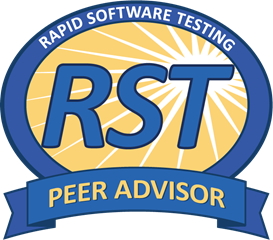It had been almost a year since I first acted as a Peer Advisor for an RST class with Michael Bolton. When Michael reached out to offer the opportunity to participate again, it was an easy decision to join his RST Explored class for the Australia/New Zealand/South East Asia timezones.
The peer advisor role is voluntary and comes with no obligation to attend for any particular duration, so I joined the classes as my schedule allowed. This meant I was in all of the first two days but only briefly during the second two days due to my commitments at SSW. Each afternoon consisted of three 90-minute sessions with two 30-minute breaks.
The class was attended by over 15 students from across Australia, New Zealand and Malaysia. Zoom was used for all of Michael’s main sessions with breakout rooms being used to split the participants into smaller groups for exercises (with the peer advisors roaming these rooms to assist as needed). Asynchronous collaboration was facilitated via a Mattermost instance (an open source Slack clone), which seemed to work well for posing questions to Michael, documenting references, general chat between participants, etc. It would be remiss of me not to call out the remarkable work of Eugenio Elizondo in his role as PA – he was super quick in providing links to resources, etc. as they were mentioned by Michael and he also kept Michael honest with the various administrivia required to run a smooth virtual class.
While I couldn’t commit as much time to the class this time around, I still enjoyed contributing to the exercises by dropping into the breakout rooms to nudge participants along as needed.
As with any class, the participants make all the difference and there were a bunch of very engaged people in this particular class. It was awesome to witness the growth in many of the more engaged folks in such a short time and I hope that even the less vocal participants gained a lot from their attendance. I enjoyed being on the sidelines to see Michael in action and how the participants engaged with his gifted teaching, and I hope I offered some useful advice here and there along the way.
I first participated in RST in 2007 in a chilly Ottawa and have been a huge advocate for this course ever since. The online version is a different beast to the in-person experience but it’s still incredibly valuable and it’s great to see the class becoming accessible to more people via this format. We continue to live in a world of awful messaging and content around testing, with RST providing a shining light and a source of hope for a better future. Check out upcoming RST courses if you haven’t participated yet, they remain the only testing classes that have the Dr Lee stamp of approval!

